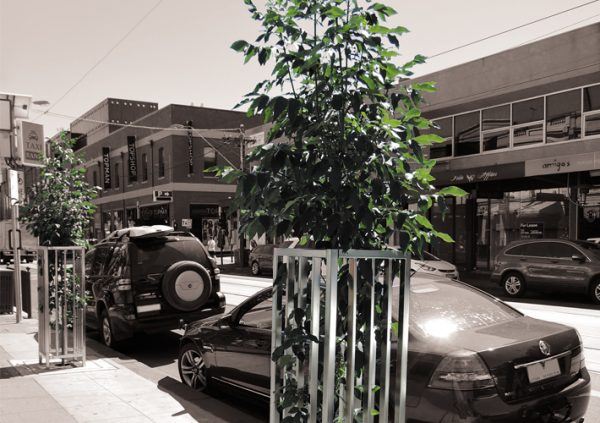
Street trees
Management Plans
These plans provide guidelines for tree protection during the construction phase, mindful of compliance requirements of the relevant municipality ie; should a supervision schedule be required, Tree logic can act as the project arborist responsible for monitoring works and providing advice.
Tree management plans are concise and should be accessible to all workers on site for the duration of the works
-
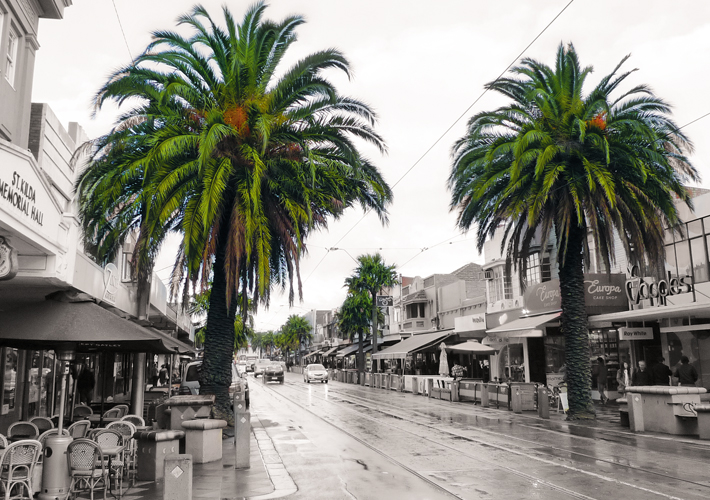
There is no one perfect urban tree. It is also important to understand that there is no one urban environment. The urban environment is a varied conglomeration of micro-climates and varied (heterogeneous) soil conditions, as well as a range of different above and below ground site constraints.
The primary aim is to plant the right tree in the right place in the right way.
Species chosen must be suitable for the identified site constraints, soil (edaphic) and climatic factors and meet the aesthetic or landscape character qualities being sought.
Matching the site constraints or opportunities to tree requirements will lead to more successful landscapes. There will be situations in which tree selection alone will be the best tool to achieve the desired outcomes; successful, sustainable landscapes without onerous management implications. Other sites, such as commercial or retail areas, may require site modification to reduce the limitations to plant growth. Selecting the right tree for the right space is critical to the success of the planting.
There is a wide range of tree species that would be suitable for urban planting and the use of indigenous plant species will be encouraged, as far as practicable and where appropriate. However, Australian species from other localities and exotic species can also make positive contributions to the landscape and local environmental factors, such as local biodiversity. In some cases these species are better adapted to the conditions of the highly modified environment and have positive attributes that are able to fulfil specific landscape functions.
Many trees have the potential to outlive those who plant them, so the impact of the tree selection and placement decision can last a lifetime. Tree managers often only get one chance to plant a tree, particularly in public landscapes, as the ability to remove and replace poorly chosen trees is limited.
Treelogic is able to provide advice to help plant the right tree, in the right place, in the right way, to make the most of urban tree planting opportunities.
-
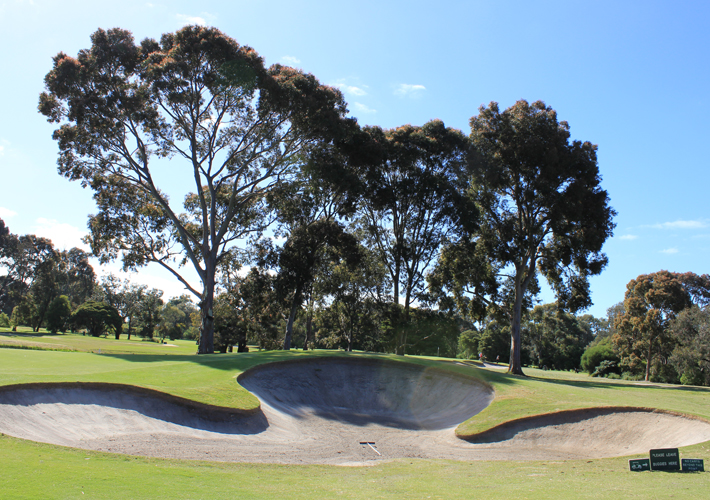
Communities are continuing to recognize the very tangible benefits that trees provide in the urban environment. Healthy urban trees reduce air and noise pollution, deliver energy-saving shade and cooling, provide habitat for wildlife, enhance aesthetics and property values, and are an important contributor to community image, pride, and quality of life. Consequently, many communities have realized that in order to protect and enhance urban tree resources they need to be managed in a cohesive, proactive manner. Tree policies provide uniform direction and standards to maintain healthy, aesthetically pleasing trees and facilitates good management of community tree resources.
All decision making, planning and management of urban trees should be guided by the following principles:
- Setting realistic goals for policy development that are achievable and in-line with expected outcomes and standards
- Public safety is a priority
- To meet challenges, such as climate change
- Effective budgeting to maintain urban tree resources and to follow planned maintenance cycles.
- Perform all tree work to the best arboricultural standards.
- Plant the right tree in the right place in the right way|
- Maximise the benefits from the existing and future street tree population
- Ensure social equity when delivering the tree planting and maintenance programs
- Raise public awareness of the importance of urban trees
Flexibility needs to be integrated to provide for unforeseen changes, contemporary best practices and to respond to community expectations.
-
A technical guideline for tree management documents standards and practices for the undertaking of urban tree maintenance.
Initially it involves a review of current practices that can identify opportunities and gaps in the current urban tree management regime, as well as identifying some of the challenges that need to be overcome.
Technical Guidelines:
- Enables decision-making by detailing transparent and accountable processes and principles for consistent street tree planting, management and maintenance.
- Documents current best practice, standards, codes and legislative requirements.
- Provides direction on the most appropriate tree species and planting design and techniques based on current knowledge that respects the needs of the wider community and the environment while minimising undesirable impacts on individual residents and businesses.
-
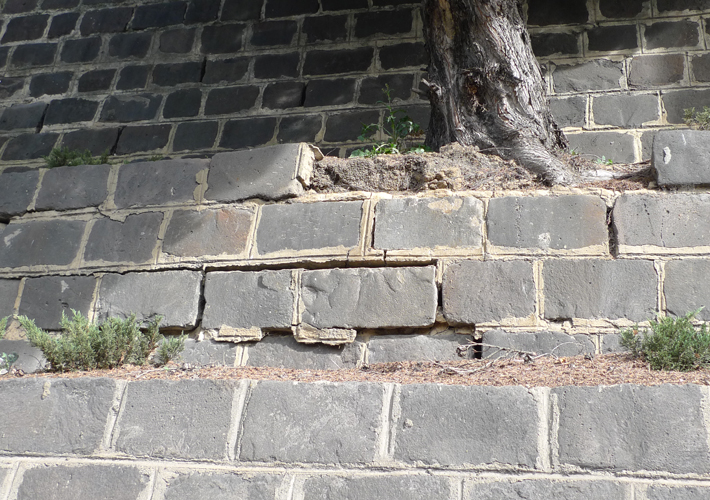
Root systems are vital to the health and longevity of trees.
The root system of a tree has four main functions:
- To anchor and support the tree in the soil;
- To absorb and conduct water;
- To absorb and conduct nutrients required for growth; and
- To act as a storage organ for reserve energy.
Roots supply 99% of water requirements of the tree and during the normal growing season they supply nutrients in solution to all parts of the tree. The roots also receive and store energy in the form of sugars and carbohydrates from the leaves which are supplied to the tree for growth and other energy intensive activities such as flowering.
Knowledge of the extent and distribution of tree root systems is essential for managing trees in the urban environment. Root growth patterns of urban trees may differ considerably from similar species in forested or agricultural environments.
It is important to realise that root growth is opportunistic, occurring only where the soil environment can sustain it with the presence of air and water being essential for growth. It is for this reason that the great majority of roots are found in the upper layers of a soil profile. However, if the opportunistic exploration of the soil encounters favourable conditions at any location, roots will proliferate.
Urban soils can be highly modified and there can be multiple physical constraints that dictate root exploration of the subterranean urban soil environment. These constraints can be broadly classified into two types: solid impediments such as building foundations, roads, and rocks; and permeable impediments, such as compacted soils.
In urban areas where there is competition for available space, tree roots are often associated with situations that cause damage to structures, footpaths, and underground services. There can be dichotomy between sustaining a healthy urban tree population with all of the associated benefits, while endeavouring to mitigate the negative impacts that these trees can have on adjacent infrastructure.
Tree roots can cause or contribute to damage to private property; usually to fences, driveways and houses/buildings, and subsequent claims can be made in both nuisance and negligence depending on the circumstances.
It is not possible to remove all risk associated with trees and infrastructure, but strategies for addressing conflict can be preventative, to reduce the risk of damage occurring or remedial, to correct damage or avoid further damage (Costello & Jones 2003).
A reasonable approach should be adopted to manage these conflicts that accepts that trees come with assumed levels of risk. A multi-disciplinary approach to solving the problem of root damage that considers a range of tree root management solutions is often required.
The health and vigour of a tree is typically the result of its ability to find water and nutrients, which is a function of the soil root zone in which the tree is growing. Enhancing the root zone can provide significant benefits to achieving healthy trees.
Urban soils are generally highly disturbed soil environments that do not mimic the soil conditions of natural soils. Human activity is the predominant agent in the formation of urban soils.
Disturbing soil profiles, mixing and filling, and contamination lead to variability (heterogeneous soil conditions). This can also lead to compaction; restricted aeration and water drainage, crusting and bare, often hydrophobic surfaces. Importantly, interrupted nutrient cycling, reduced organic carbon, and modified soil organism activity result in unhealthy (low vigour) growth and predisposes plants to other environmental and biological stresses.
Tree decline is as a result of several interacting factors, such as prolonged drought, competition with adjacent trees, pest and disease infestation and generally depleted soil environments. Poor soil structure is a significant predisposing stress factor for plants. Poor structure affects water infiltration and permeability, water holding capacity, aeration status and loss or pore space. If plants do not have access to sufficient water and oxygen they will decline.
Healthy soil requires organic matter; it aids in aggregation (soil structure), cation exchange (storehouse of nutrients) and water holding capacity. But most importantly, organic matter sustains biological life in the soil; the greater amount and diversity of biological life there is in a soil the greater potential for healthier plant growth. Soil health is the basis for tree health and by extension, healthy trees can help develop healthy communities and cities.
Treelogic can provide recommendations and techniques for improving the urban soil environment in order to achieve healthier trees.
-
The management of any resource begins with an inventory of that resource and urban trees are no exception. Without detailed data on location, species composition, condition and growing environment of urban trees, it is not possible to manage them effectively, nor estimate the ecosystems services they provide or structural value, nor to allow the development of informed policy and strategies (Morgenroth and Östberg, 2017).
The key to a better understanding of the tree resource being managed is to appreciate what the goals, objectives and vision of the community is with respect to its trees.
From Urban Forest Management Plan Toolkit (http://ufmptoolkit.com). A project of California Urban Forests Council, and the Inland Urban Forest Council.Collecting and maintaining information on trees provides a number of benefits for the management of trees in urban landscapes. Benefits can range from operational maintenance information, risk management, planning and budgeting through to strategic information such as species diversity and the level of ecological services provided.
In fact, data from urban tree inventories at single-tree level have found applications in research with a steadily growing number of different study focus areas (Anders, Nielsen, Östberg, and Delshammar, 2014).
In particular, the use of tree data in studies focusing on the ecosystem services provided by urban trees, including their economic value, have increased as a supplement to inventories linked more directly to daily arboricultural management and planning by city authorities.
The i-Tree suite of software programs, and in particular i-Tree Eco, is a system that quantifies the environmental benefits of urban trees. i-Tree Eco is a science-based, peer-reviewed computer model designed to calculate urban forest ecosystem services and values based on field data inputs and available data sets from external sources (e.g., weather and pollution data sets).
The i-Tree analysis helps quantify the structure of tree populations, the environmental services that trees provide, and also provides a structural value. The ecosystem services relate to the urban heat island effect, CO2 sequestration, storm water runoff, urban biodiversity, and pollution capture.
A tree inventory need not be complex or expansive in its attributes being measured/assessed, but should provide sufficient, minimal level of information that will allow the manager to make appropriate and timely management decisions that benefit the broader community (Miller, Hauer, & Werner, 2015).
Tree inventory needs will change dependent on the size of an area and/or community, the level of service deemed appropriate, budgetary constraints and the expected management outcomes or the ‘why’ are we undertaking a tree inventory.
The question of what to measure for an urban tree population has multiple answers dependant on the purpose and goals of the inventory. With its experience in tree inventories, i-Tree Eco and urban tree management, Treelogic can assist your organisation with determining the tree variables to be collected, and the successful implementation and development of a tree inventory to help achieve the goals being sought.
Monitoring of tree data over time also allows analysis of changes in tree population composition, size and other characteristics to ascertain success of management implementation and allows better informed policy and decision making.
Field surveys for urban tree inventory programs at single-tree level are still the most accurate way to obtain tree information for multiple use applications, particularly if the quantification of ecological services is being sought. The comparative analysis undertaken by Nielson et al (2014) of contemporary inventory methods of tree data capture showed that available technology and current data processing limit the reliability of data obtained from satellite- and airplane-supported inventory methods and on-the-ground scanning or digital photography.
References
Nielsen, A. B., Östberg, J., and Delshammar, T. (2014) Review of urban tree inventory methods use to collect data at single-tree level. Arboriculture & Urban Forestry 2014. 40(2): 96–111. International Society of Arboriculture.
Miller, R. W., Hauer, R. J., & Werner, L. P., (2015) Urban Forestry. Planning and managing urban greenspaces. Third edition. Waveland Press, Inc.
Morgenroth, J., and Östberg, J. (2017) Measuring and monitoring urban trees and urban forests. In Ferrini, F., Konijnendijk van Bosch, C. C., and Fini, A., Ed. (2017) Routledge Handbook of Urban Forestry. Routledge.
-
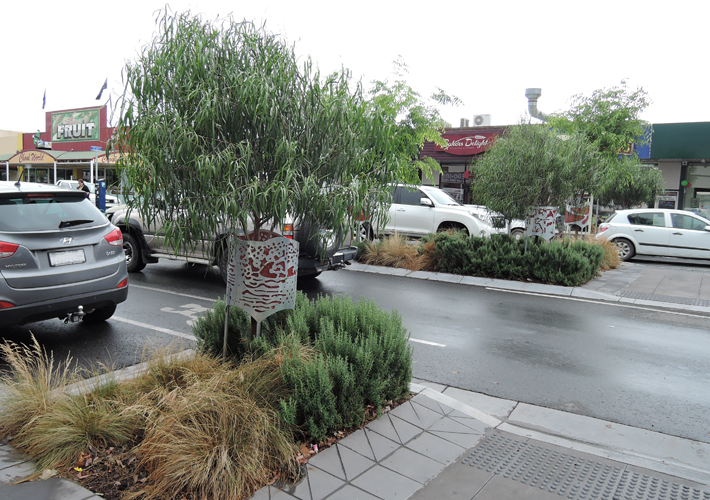
City of Maribyrnong
Urban Tree Renewal Plan
The objectives were to increase in resilient, dynamic, diversified and healthy canopy coverage, assist the City to adapt to climate change, and to become a Regional Leader through implementation of evidence based, best practice, urban tree management.
City of Maribyrnong
Urban Forest Assessment. Inventory of all street and park trees within the municipality, 2014
City of Melbourne
Development of tree regulations for private trees for the City of Melbourne. Assisted with the Council report with recommendations that lead to the Exceptional Tree Register (2011).
Treelogic undertook a peer review of the City of Melbourne’s Exceptional Tree Register (2012). A number of anomalies were found in the initial data. Council wanted to verify the accuracy of the data within each tree report in the ETR before the planning scheme amendment was further considered by Council and then assessed by a planning panel.
City of Melbourne Exceptional Tree Register Peer Review 2013. Provision of expert witness evidence for Amendment C212 Exceptional Trees panel hearing June 2014
City of Melbourne. Assisted with development of Urban Forest Diversity Strategy with ASPECT Studios. Development of tree species list.
City of Melbourne Assisted with the development of the Carlton, Parkville, Southbank, Docklands, North Melbourne, Kensington, Melbourne CBD, East Melbourne and South Yarra Precinct Plans. Collection of street data and identification of street tree opportunities 2011 -2014
City of Melbourne
Peer review, Tree Retention and Removal Policy
Melbourne Cricket Club. Yarra Park Tree Strategy. Development of full tree inventory, including i-Tree Eco assessment. Development of 20-year tree removal and replacement strategy. Development of tree species list. Development of tree maintenance scheduling 2013
City of Melbourne Risk Assessment
Analysis of the risks associated with having trees in an urban landscape and how those risks should be managed through a cyclical assessment and maintenance program. Information to inform the contract specifications for tree maintenance
Yarra Golf Club. Tree management plan. Identifying hazardous trees, plotting trees onto GIS and development of five year management plan 2007, review 2012
City of Port Phillip
Assisted with the development of street tree management strategy “Greening Port Phillip – an urban forest approach 2010”. Including assessment and data collection of all streets within municipality
City of Kingston.
Tree Management Policy and Tree Management & Technical Guidelines 2010
City of Stonnington.
Contracted to undertake the tree assessment and reporting back to Council for Tree Work Permit Applications
Tree Inventories and Management Reports
Surveys and Management Plans for: Latrobe Golf Club, Kingston Heath Golf Club, Rosanna Golf Club, Green Acres Golf Club, Victoria Golf Club, Spring Valley Golf Club, Royal Melbourne Golf Club, Portarlington Golf Club, Freeway Golf course, Dorset Golf Course, Ringwood Golf Course, Yarra Yarra Golf Club and Huntingdale Golf Clubs
Royal Melbourne, Healesville and Werribee Zoos – Tree data collection and database design
Adelaide botanic Garden, Centennial Park, Sydney and Sydney botanic Gardens – Tree data collection and database design.